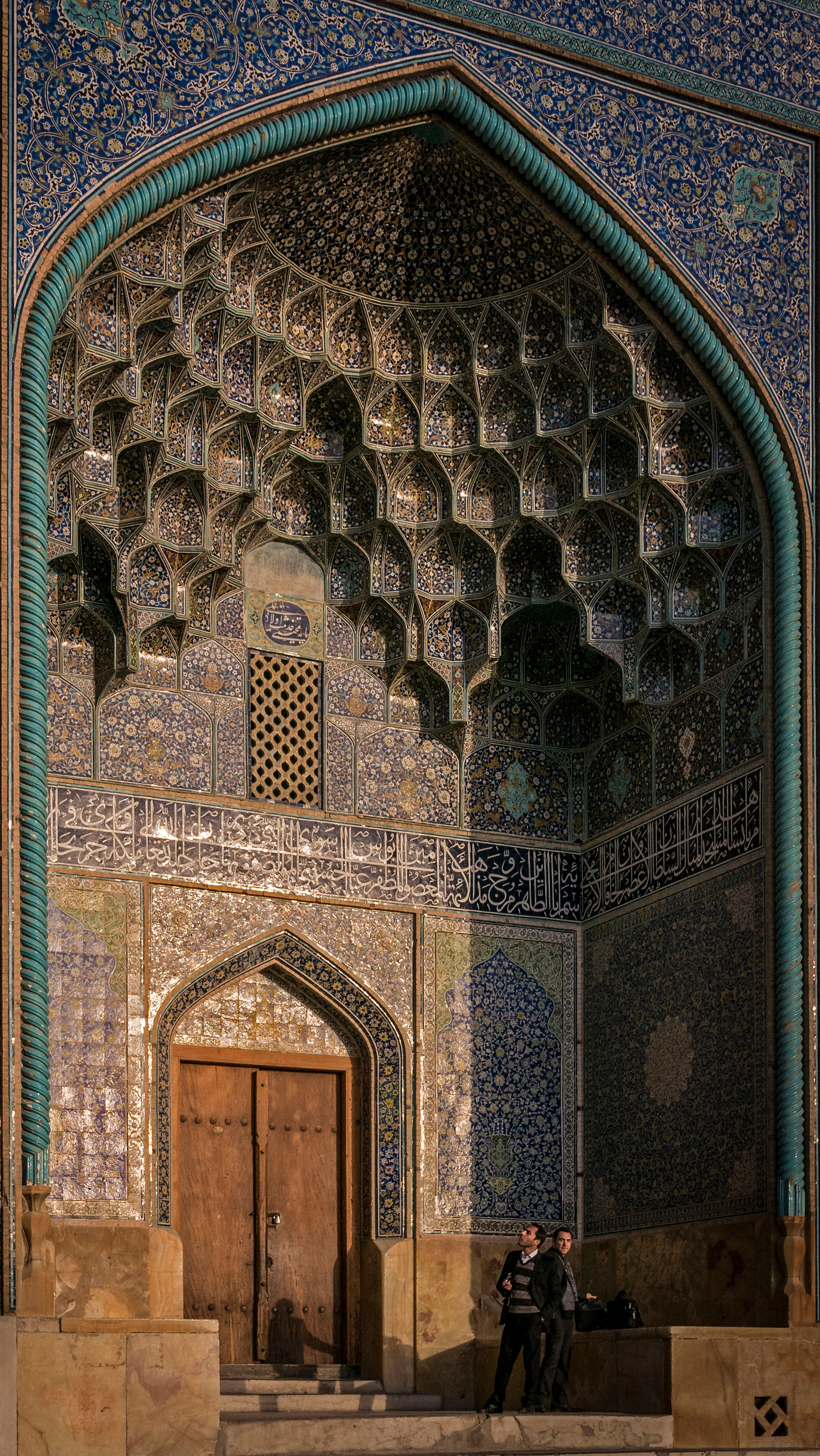Faces of Iran
Despite the forbidding image of Iran, the people are sophisticated, kind and full of zest




The first thing I notice is the bandage on her nose. The young woman flaunts it like a status symbol in Iran, the nose-job nexus of the world.
On her friend's head, I spy bleached-blonde hair, while a third companion shows off vivid nail art.
They are from another Iranian city and are vacationing as an all-girl trio in the capital Teheran. All smiles under their head scarves, they pose willingly when I ask for a photo.
Women in Iran find ways to live stylishly yet keep within the boundaries of Islamic law. In a land with a repressive reputation, it is fascinating that the women reveal another face of Iran: zest, independence and fashion flair.
On my 10-day journey across Iran in April, I keep noticing that women drive and some walk alone. This is unlike austere Saudi Arabia, often the prism through which outsiders view the unknown Middle East.

Travellers who picture Iran as a nuclear nation patrolled by morality police are delighted to discover a safe land and very friendly people.
One female Iranian driver, with a carload of children, spontaneously stops in an alley to greet us.
She has just seen us emerging from the gated home of an elderly woman, who has also been spontaneous in inviting us to her abode.
While my companions and I are admiring a 3,000-year-old cypress tree in Abarqu, a central Iranian city, she gestures to us to follow her.
We do not understand a word she says, but have an eyeful of her home, a place lined with carpets. There is a rotary telephone on the floor and little adornment.
She points to a pomegranate orchard at the back, then reveals herself to be a micro-entrepreneur when she pulls out a pot of pomegranate paste to sell. A hotelier from Hong Kong in our group of 16 buys it for 200,000 rial (S$8.80).
As we traverse four cities in Iran - Shiraz, Yadz, Isfahan and Teheran - we are mobbed like celebrities.
Teenage girls wearing black robes and track shoes and wielding pink selfie sticks excitedly ask where we are from and squeal when we say Singapore and Hong Kong. Some ask hopefully if we are from South Korea.

Can it be that there are fans of Korean dramas in Iran? When I look up Korean reports later, it appears that the fever ignited in Iran a decade ago and is not cooling down, not with the wild popularity of the military-romance drama Descendants Of The Sun.
China Central Television (CCTV) is also favoured. In a bazaar in Shiraz, a city of gardens and poetry in south Iran, an elderly shopkeeper who peddles nuts greets me in Mandarin and offers a generous handful of pistachios.
"Kai xin guo,'' he says distinctly, using the Mandarin name for the beloved nut.
I am impressed when he says he learns Mandarin from CCTV. He sells a huge variety of pistachios, including seed-like "baby pistachios" with a mild flavour.
Pistachios originated in the ancient lands of the Middle East, and Iran is now vying with the United States to be the world's biggest pistachio grower.
In the end, I pick up a bag of fragrant white mulberry. As I nibble, I ask our guide Jalil Charkhian what is special about mulberry and a female passer-by chips in helpfully in perfect English: "Healthy energy."
I find a lot of impromptu hospitality and everyday kindness. Outside the mausoleum of mediaeval poet Hafez, still the most popular poet in Iran today, a teenager carting a box of Hafez verses printed on slips of paper walks up to me. His budgie will pick a verse for me for a fee, he indicates.
I decline and as the boy walks alongside me in Shiraz, he cues the budgie to pick a verse for me anyway. "No money,'' he says. It is a gift. Then he places the wee bird on my hand when I say it is cute.
There is a joy and innocence towards tourists in Iran, which is still under-visited after 37 years of isolation that began with the 1979 Islamic Revolution and continued when Iran pursued its nuclear ambitions.
When I was a foreign correspondent in Washington, former United States President George W. Bush created a near-irreversible political trope in 2002 when he demonised nuclear nations Iran, Iraq and North Korea as the "axis of evil" for sponsoring terrorism.
With Iran portrayed as an ugly nation by the West for years, it is not so surprising that only five million international tourists showed up in 2014. This is a pinprick compared with France, the world's most adored destination with 83.7 million tourists the same year.
This January, however, sanctions were lifted after Iran reduced its nuclear programme. It had kept its end of the historic nuclear bargain inked with six world powers, United Nations inspectors concurred.
With the world now rushing in, this is an ideal time to explore before change accelerates across the oil-rich land of 80 million people.
For now, many corners of Iran are serene and lost in time.
Attractions are not yet inundated. There is time to trek slowly up to the Towers of Silence, a Zoroastrian burial complex outside the desert city of Yadz.
In Persepolis, where I wander among the exquisite ruins of the 2,500-year-old city built at the peak of the Persian empire, it feels like the fabled city has fallen into a deep millennia-long slumber.
My solitary strolls amplify the sense that Iran awaits exploration.
In elegant Isfahan in central Iran, our group disperses at the grand Naqsh-e Jahan Square, which is bigger than Moscow's Red Square.
Walking alone in the cool spring night, I feel inconspicuous in my head scarf. I watch as a young woman whizzes past on roller blades. Families are picnicking.
Coloured lights play on the pool in front of the palace, and I imagine Persian royals of epochs past listening to music and gazing at the pool. This may be my magical moment in Iran, I tell myself.
Another day, I stroll to the romantic Siosepol Bridge, also in Isfahan. I had seen women walking alone at 8pm across the crowded bridge the night before and I loved the river scenes framed by the 33 arches of the bridge.
On my own, I enjoy the friendly atmosphere, but there is an ominous moment. Several young men say hello to me; I smile and step away. A pause, then one of them says: "Your scarf is not good."
Is it a taunt? Is my scarf slipping again? When I return to the hotel, an Iranian woman says my scarf is perfectly fine. "It is a pity they said that,'' she asserts.
My guide Jalil asks pointedly: "What were they wearing?" Jeans, I reply. It does not appear that I encountered zealots.
That is the only time I feel a bit of unease, but otherwise, and till now, I am struck by the friendliness and curiosity of the people. In Isfahan, when I sip coffee at a cafe with two companions, a family starts a conversation with us. It turns out that they are flying to Singapore soon and one of them, a young architect, and I exchange numbers.
We WhatsApp each other when the family spends three days in Singapore, but are unable to meet. They pop into Sentosa and, later, the Merlion becomes the WhatsApp profile picture of my new friend.
"Singapore is a beautiful city with powerful laws and it was a great trip for us,'' he taps out this message when he is home.
Ms Mandy Tay, a freelance trailer producer who has visited Iran three times and whose video of her 2013 solo journey has been shared virally on social media, attests to the ease of bonding with Iranians.
She tells story after story about their kindness, including the day a family invited her to hop into their car for the five-hour ride between Isfahan and Shiraz. She shared the back seat with a stack of pita bread.
"Iran transformed the way I travel,'' says Ms Tay, who speaks some Farsi. If she can travel in Iran as a single Asian woman, she can go anywhere, she reasons. "After Iran, I trust in the goodness of people."
Tellingly, one companion on my trip urges me to "encourage the fearful" to visit Iran.
Hong Kong photographer Bobby Lee, 57, who recently led a Global Exposures photography trip to Iran for the luxury travel company Country Holidays (www.countryholidays.com.sg), was invited to a stranger's kitchen and offered bean soup from a vat.
"It's almost too easy to take photographs in Iran. It's a bit like India, though not over-enthusiastic. Every first-time visitor thinks Iran is full of restrictions, but people put their arms around our shoulders, like we are brothers," he recalls.
He points to Iran's 7,000 years of heritage and notes that its people are cultured and knowledgeable.
Indeed, our poetry-loving guide Jalil, 57, who studied industrial engineering in the University of Tennessee and lived 17 years in the US, mentions the talented Iranians in the US and Europe.
Among them are top scientists in Nasa, the National Aeronautics and Space Administration in the US, tennis star Andre Agassi, Beverly Hills mayor Jimmy Delshad and CNN anchor Christiane Amanpour.
When I worked in the World Bank in Washington, the director of the statistics division was a forceful Iranian woman while another colleague, who helmed IT, was a Ferrari-lover and witty storyteller who first piqued my curiosity about his richly layered country.
A gulf lies between the perception of Iran and the amiable reality.
Of course, Iran is complex and diverse, and not always a buddy or brother. When our coach passes the Natanz nuclear plant, set incongruously near sweet pomegranate groves, Jalil tells a cautionary tale about a German tourist who snapped forbidden photos of the top-secret facility.
Not long after, Iranian officers halted the bus. With pinpoint precision, they zoomed in on the seating position of the hapless German, and all his photos were deleted.
Admiringly, a traveller among us exclaims: "Like Israel!"
Jalil reflects for a second and deadpans: "Mossad is also good."
He is referring to the Israeli intelligence agency, which has a reputation for invincibility, and in that moment I understand how highly the Iranians think of themselves.
Friendly, sophisticated, literature- loving, Iran is all this and more, and different from the one- dimensional portrayal of an evil empire.
•Follow Lee Siew Hua on Twitter @STsiewhua
•The writer's trip was hosted by Qatar Airways and Country Holidays.
•This is the second of a two-part Iran travelogue.
•See a video of the places and faces of Iran at http://str.sg/4iZS
Join ST's Telegram channel and get the latest breaking news delivered to you.
A version of this article appeared in the print edition of The Sunday Times on July 03, 2016, with the headline Faces of Iran. Subscribe

